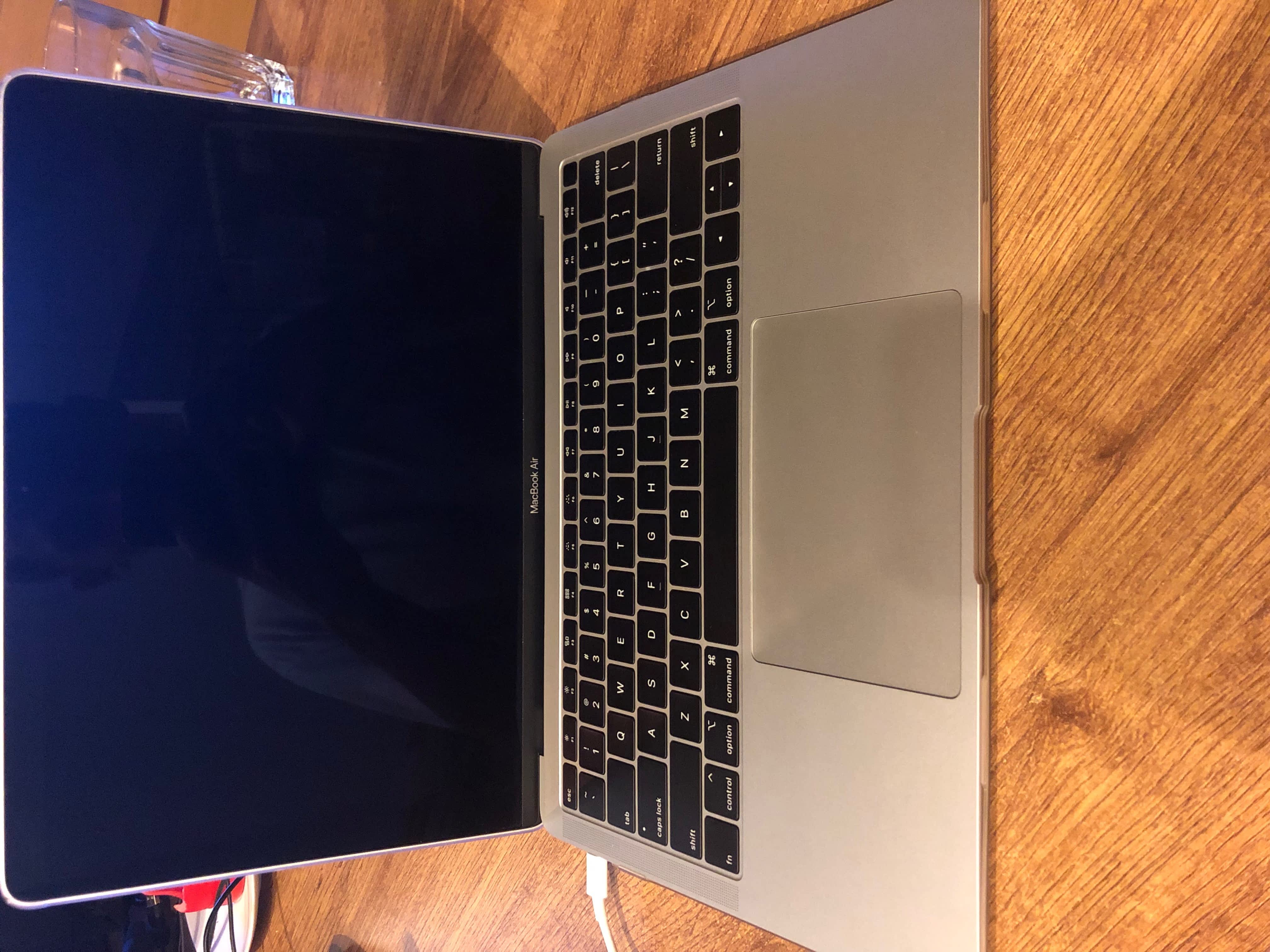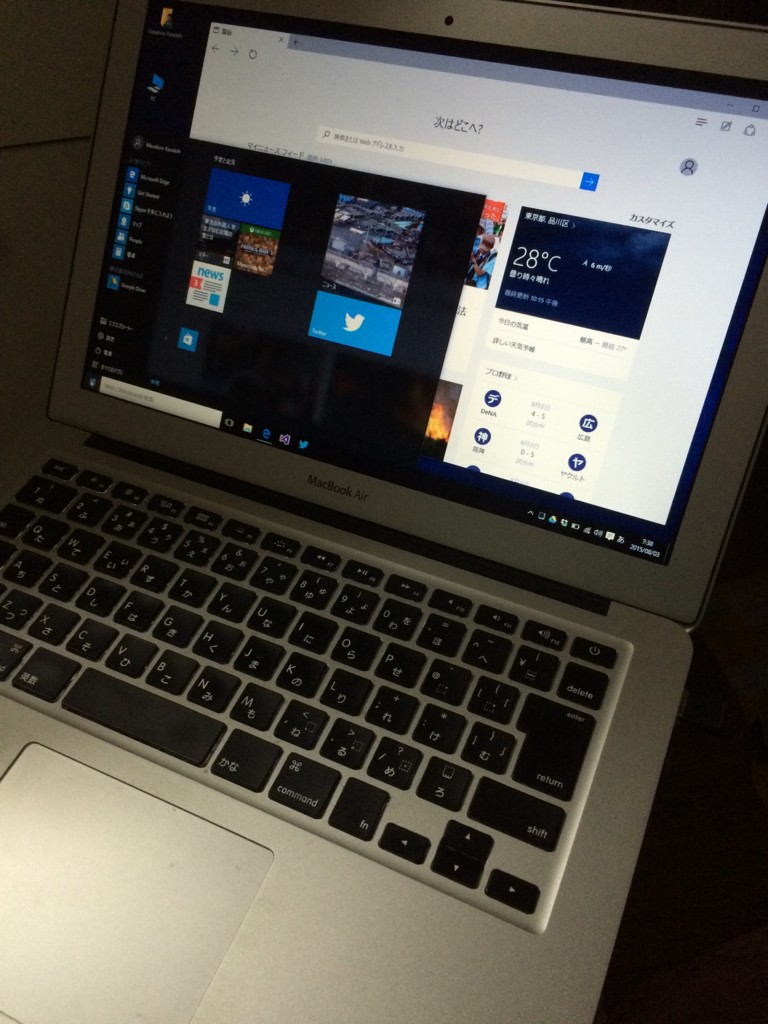

The other small changes to the design include the removal of the “MacBook Pro” logo from the bottom bezel, new rubber feet on the bottom, and ultrathin bezels up top. It’s not unlike the strategy used in fashion and design industries. This is an expensive product, and Apple wants to welcome you to the cool club.

That’s why it most certainly includes a black Apple sticker in the box. Like the Space Gray iMac Pro and matching accessories, Apple uses the slightest change in color scheme to give a premium, exclusive feel. It also immediately distinguishes these MacBook Pros from the otherwise similar-looking MacBook Air (and 13-inch MacBook Pro). Silver laptops with black keycaps has become ubiquitous in the laptop world, and the MacBook Pro’s changeup is refreshing. The black keyboard, in particular, feels like a statement piece when so many laptops have copied the MacBook look. Black has become the dominant accent color, gracing both the Apple logo and the backdrop of the keyboard. It’s still made from a unibody aluminum chassis, it still comes in silver or space gray, and there’s still an Apple logo on the lid.īut the changes in this generation aren’t subtle enough to be missed. Taking a step back, the 2021 MacBook Pro still very much looks like a MacBook. You can even get last year’s model for a discount thanks to this Cyber Monday MacBook Pro deal. One thing’s for sure: They won’t need to apologize for this one. You might even call it the best of both worlds - which is exactly what you want in a “pro” laptop. It’s bold in ways that make it exciting, yet familiar in ways that keep it convenient. Whether it’s the thickness of the chassis, the Touch Bar, or the ports, the MacBook Pro represents a reversal of nearly every major design decision from the previous generation.Īnd yet, the 2021 MacBook Pro manages to be more than just a referendum on the 2016 MacBook Pro.

Instead, Apple corrects its errors by putting out a product like the 2021 MacBook Pro. It won’t grovel or ask for forgiveness either. It’s not a phrase you’ll hear a company like Apple ever utter. VAT) with 16GB of RAM, a 512GB SSD and an AMD Radeon R9 M370X GPU. If you need a dedicated GPU to enhance graphics performance, your only option is to step up to the even more expensive 2.5GHz model which costs £1,999 (inc. That will be perfectly acceptable for many users running Photoshop and other creative applications, but it's still relatively modest for a laptop costing £1,599. However, this model's reliance on Intel's integrated Iris Pro 5200 graphics rather than a dedicated GPU means that it only manages a relatively modest 31fps for OpenGL performance when running Cinebench R15. The MacBook Pro's 15.4-inch, 2,880-by-1,800-pixel (220ppi) Retina display also remains outstandingly bright and colourful, and well suited to video- or photo-editing work. To be fair, the quad-core Haswell Core i7 processor used in the MacBook Pro still provides plenty of raw horsepower, with Geekbench 3 reporting a multi-core score of 13,281 that outpaces even the top-of-the-range 5K iMac that's aimed at video editors.
MID 2015 MACBOOK PRO RETINA LCD UPGRADE
That's not the sort of upgrade that will have existing users queuing up to purchase the latest model.

VAT) with 16GB of RAM and 256GB of solid-state storage. Pricing remains the same too, with our 2.2GHz review model starting at £1,599 (inc. The 15-inch MacBook Pro now features the pressure-sensitive Force Touch trackpad. If you see inaccuracies in our content, please report the mistake via this form. If we have made an error or published misleading information, we will correct or clarify the article. Our editors thoroughly review and fact-check every article to ensure that our content meets the highest standards. Our goal is to deliver the most accurate information and the most knowledgeable advice possible in order to help you make smarter buying decisions on tech gear and a wide array of products and services. ZDNet's editorial team writes on behalf of you, our reader. Indeed, we follow strict guidelines that ensure our editorial content is never influenced by advertisers. Neither ZDNet nor the author are compensated for these independent reviews. This helps support our work, but does not affect what we cover or how, and it does not affect the price you pay. When you click through from our site to a retailer and buy a product or service, we may earn affiliate commissions. And we pore over customer reviews to find out what matters to real people who already own and use the products and services we’re assessing. We gather data from the best available sources, including vendor and retailer listings as well as other relevant and independent reviews sites. ZDNet's recommendations are based on many hours of testing, research, and comparison shopping.


 0 kommentar(er)
0 kommentar(er)
